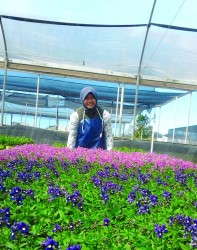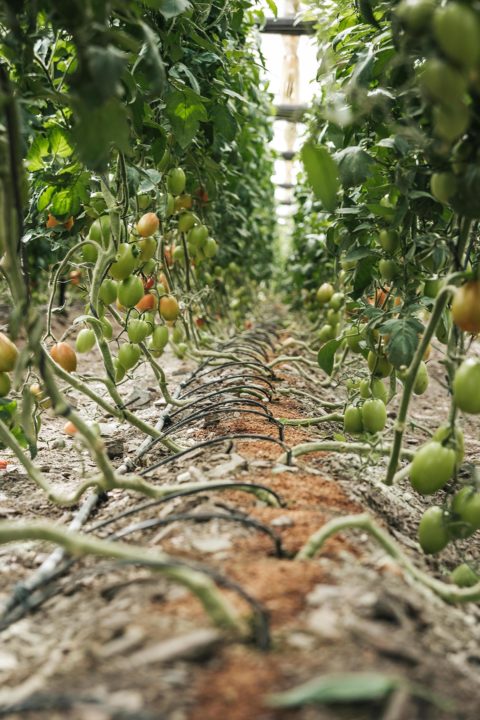Greenhouse Operations In Indonesia

When I got an email confirming my placement with this internship, I thought nurseries in the U.S. are all very modern and machine-automated. I thought everything was computerized, and the processes of filling up pots with soil, planting and watering were all done by machine. But I was wrong. Not all nurseries in U.S. are modern, but there are some nurseries that are semi-modern — meaning aside from using machines, they also need quite a bit of human labor to get the job done.
One of these nurseries is my internship placement, Monterey Bay Nursery (MBN) in California. I think MBN is similar to the nurseries in Indonesia. Everything is simple. The greenhouses are made from wood or bamboo and have plastic covers. The tables are made from wood and covered by plastic, as well. The watering system consists of a sprinkler or hose. These systems are adaptable and could be used in Indonesia.
It has been six months since I started my internship. I’ve gained so many experiences and am learning about kinds of the plants that I have never seen in Indonesia. Calibrachoa, nemesia, achillea, discia and many more, are new to me. I also learned about the work culture in this country. Working here, I have adapted to do good work corectly and efficiently. The workers do not complete their jobs while sitting. That is the work culture in the U.S. If the workers in Indonesia were more like those in the U.S., I am sure the horticulture industry would be better.
My internship also taught me about the different methods that both countries use. For example, in Indonesia, we almost always use regular, “straight” soil for planting. Here, growers do not use soil. They use a soil mix consist of peatmoss, redwood bark and perolite. This kind of soil is planting media for the plants, and by using it, the operations grow better plants.
The second difference concerns the pot. Nurseries in Indonesia mostly use 6-inch pots, but with the same plants here, we can use a 4-inch pot. This may reduce the production cost. Another difference is the maintenance system. In the U.S. most nurseries have their own methods of improving maintenance and production. One method is the color flag system. In MBN, if the plants have a white flag, it means those plants are for propagation. A red flag means the plants need to be sprayed with chemicals, and an orange flag means the plants are ready for sale. Nurseries in Indonesia do not use the flag system yet, but I would promote the flag system to farmers there.
The fourth difference relates to the standard safety equipment used when working. Everyone should wear safety shoes, a pair of gloves, a mask and glasses to protect our eyes from the soil. Workers in Indonesia, however, wear sandals and shorts and never use gloves. I don’t know why workers in Indonesia are “so brave,” as if they feel safe and comfortable with what they wear to work. I think the Indonesian government should be more concerned about the safety system in agriculture. The government does not have rules about standard work equipment like in the U.S., even if they know it is important to care for the workers.
Another tip I learned about is to use vinegar in the greenhouse. As we know, vinegar functions as an ingredient in cooking. Besides that, vinegar can also be used to kill liverworts or weeds. Just mix one part vinegar with three parts water and spray it. It is simple, efficient and eco-friendly. The weeds will be dead one to two weeks later.









